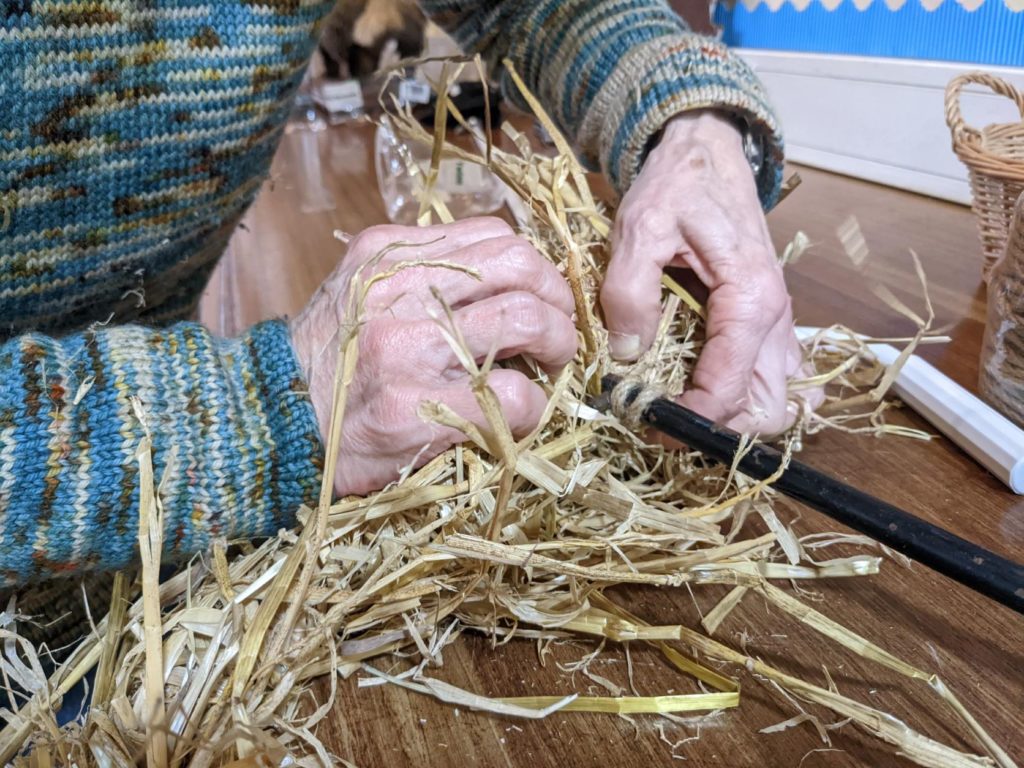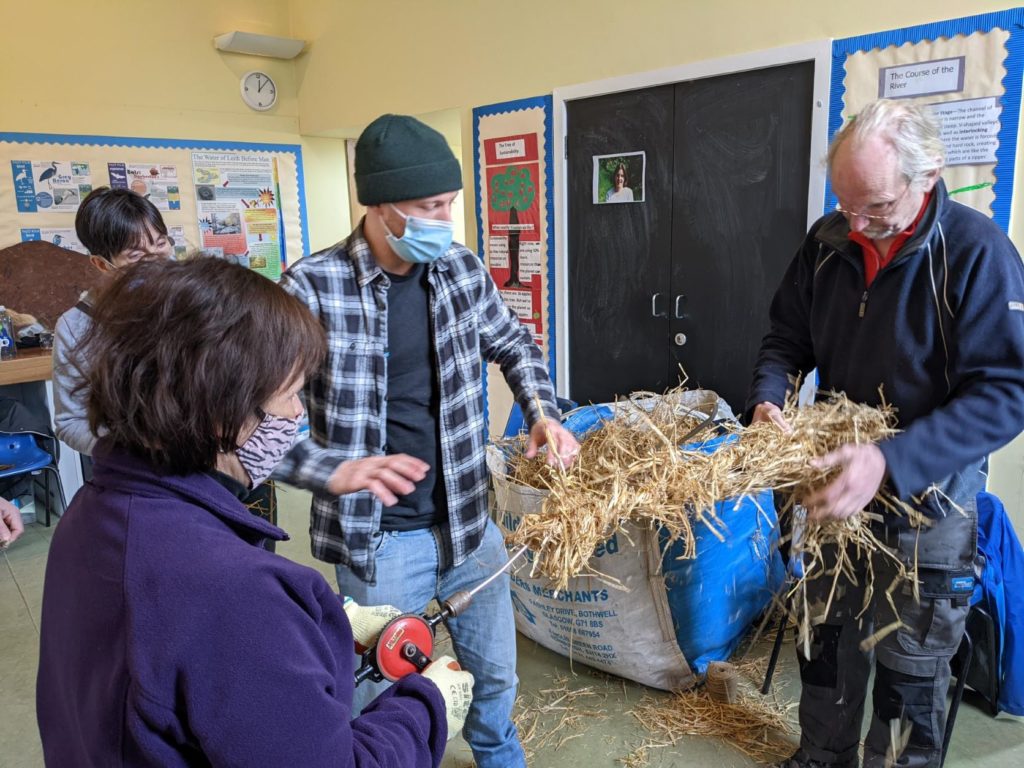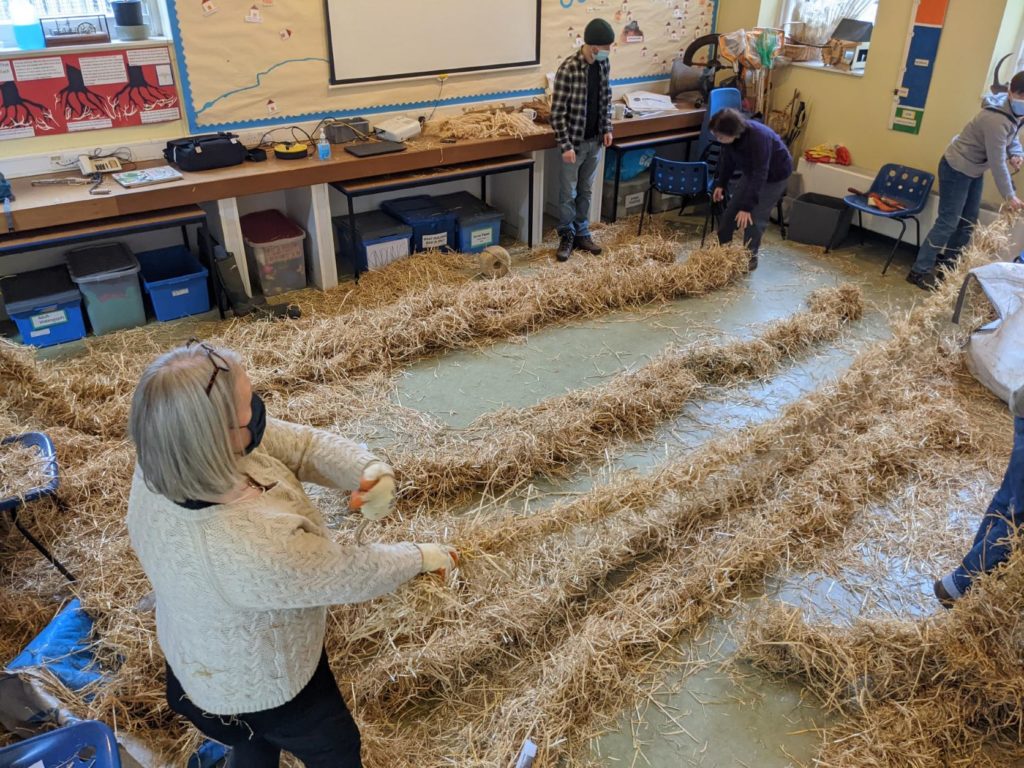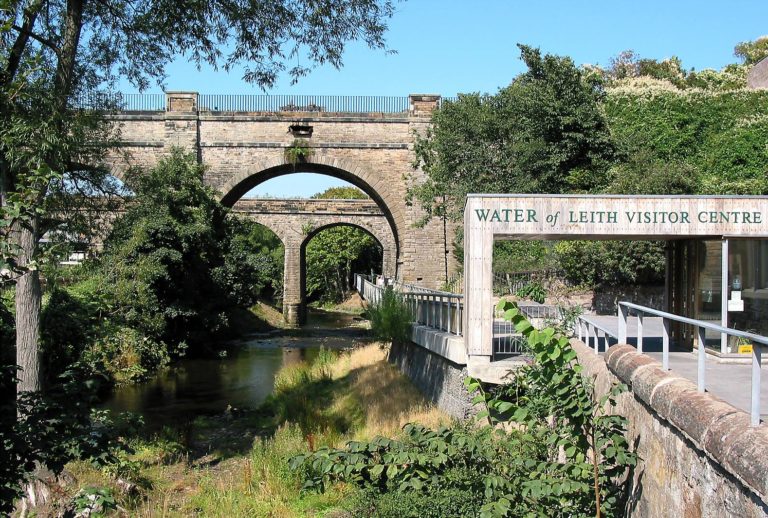Volunteers had an amazing opportunity to learn the tradition skill of making Eel ropes to open habitat for European Eel on the Water of Leith.
The European Eel is a critically endangered species. It has a unique life cycle which make them vulnerable to any changes both in the marine and freshwater habitats. All European Eels are born in the Sargasso Sea. They make a 4000-mile migration back to Europe using ocean currents as fertile eggs and then willow shaped larva and eventually become glass Eels. When entering brackish / freshwater the glass Eels begin to pigment and become elvers. When elvers reach 8cm they migrate upstream in freshwater looking for habitat to grow. The Freshwater stage of an Eels life cycle is known as a yellow Eel. This stage can last between 5-20 years depending on sex, resources, and temperature. This can take a good deal longer in cooler climates like Scotland. When these Eels reach an adequate size and have enough fat stores the yellow Eel transforms into a silver Eel. It is the silver Eel that is strong enough to make the journey back to the Sargasso Sea to spawn and so the cycle starts again.
Amazingly there are European Eels in the Water of Leith. Due to the WOL industrial past there are many barriers to Eel migration on our little river. The first of these barriers are the artificial harbour gates in Leith. Then there are many weirs which are a legacy of the milling industry on the WOL. Weirs are manmade walls across the river that once created a head of water to power water wheels. Some of these walls are sloped but too many are vertical surrounded by concrete or brick walls which prevents Eels from getting upstream. This significantly reduces Eel habitat on the WOL which means they struggle to make it to a suitable size to make the migration back to their spawning ground.
To help Eels get over the vertical weirs WOL volunteers have been taught the traditional skill of making Eel rope. Thanks to the councils South West and Pentlands Community Grant scheme we were able to buy materials and tools to make the rope. Natural twine is used as the core of twisted long cut straw to create a natural lose rope that acts as a ladder for young Eels. If the rope remains saturated, Eels will be able to move past even the largest of weirs, thus opening their habitat upstream and increasing the chances of yellow Eels developing into Silver Eels.

10 volunteers spent a day making these ropes for every impassable weir on the WOL and the harbour gates. It was a very stormy day, so we had to do this inside the Visitor Centre. There was straw flying everywhere, but that did not put us off. We hope to fix these in place next week. We will be surveying the fish in the WOL this year so will be able to see if the ropes are working. The hope is that now the volunteers know this skill we will be able to make new rope every time one needs replacing. We may even be able to use are own straw harvested by the scything team when we do the Autumn cut of out meadows! Watch this space we will keep you updated about this exciting project.




